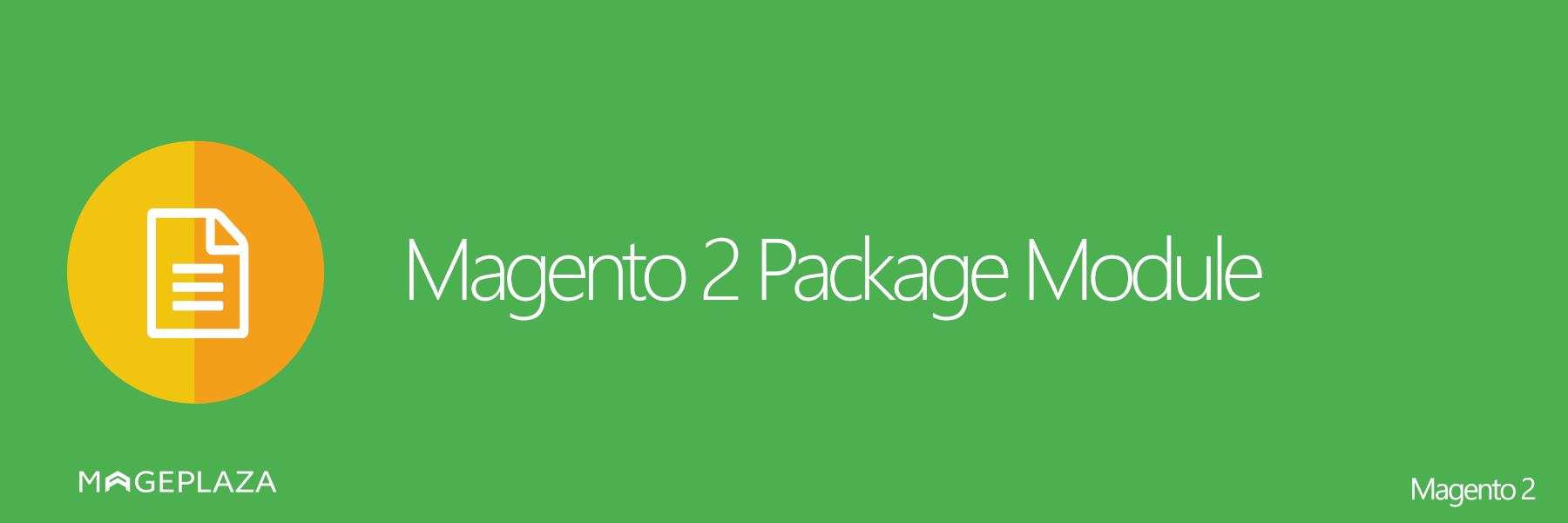How to Package Module in Magento 2?
Vinh Jacker | 03-17-2025

How to Package Module in Magento 2? You will be guided in this topic by creating a composer file composer.json before you implement the packaging of any module. With the assistance of the composer file, it is allowed to deliver, install, and upgrade components in an application instance.
4 Steps to package module in Magento 2
- Step 1: Setup a Magento Composer file (
composer.json) - Step 2: Register the component using
registration.php - Step 3: Package and generate the component
- Step 4: View sample composer.json
Step 1: Setup a Magento Composer file (composer.json)
The composer.json file allows specifying the name, Magento 2 requirements, version, and some of other basic information about the component you are concerning. However, you need to save this file in the root directory of the module.
The composer.json uses Composer’s generic schema, with some requirements:
| Element | Description |
|---|---|
name |
A fully-qualified component name, in the format <vendor-name>/module-<component-name>. All letters must be in lowercase. Use dashes in the <component-name> to separate words. |
type |
For modules, this value must be set to magento2-module. Other possible types are metapackage, magento2-theme, and magento2-language. |
autoload |
Specify necessary information to be loaded, such as [registration.php](extension-dev-guide/build/component-registration.html). For more information, see Autoloading from Composer. |
In Magento Marketplace, there are a number of the acceptable component types. Each component type is corresponding to one composer type in the next column of the following table. And the value of the type field you must add to composer.json for that type of component.
| Friendly name | composer.json `type` |
|---|---|
| Metapackage | metapackage |
| Module | magento2-module |
| Theme | magento2-theme |
| Language package | magento2-language |
Let’s take the below example for Metapackage
{
"name": "magento/product-community-edition",
"description": "A sample metapackage",
"version": "2.0.0",
"type": "metapackage",
"require": {
"php": "~5.5.0|~5.6.0|~7.0.0",
"zendframework/zend-stdlib": "~2.4.6",
"zendframework/zend-code": "~2.4.6",
"zendframework/zend-server": "~2.4.6",
"zendframework/zend-soap": "~2.4.6",
"zendframework/zend-uri": "~2.4.6",
"zendframework/zend-validator": "~2.4.6",
"zendframework/zend-crypt": "~2.4.6",
"zendframework/zend-console": "~2.4.6",
"zendframework/zend-modulemanager": "~2.4.6",
"zendframework/zend-mvc": "~2.4.6",
"zendframework/zend-text": "~2.4.6",
"zendframework/zend-i18n": "~2.4.6",
"ext-ctype": "*",
"ext-gd": "*",
"ext-spl": "*",
"ext-dom": "*",
"ext-simplexml": "*",
"ext-mcrypt": "*",
"ext-hash": "*",
"ext-curl": "*",
"ext-iconv": "*",
"ext-intl": "*",
"ext-xsl": "*",
"ext-mbstring": "*",
"ext-openssl": "*"
},
"license": [
"OSL-3.0",
"AFL-3.0"
]
}
And the following example is the composer.json file for a module:
{
"name": "magento/sample-module-newpage",
"description": "A Magento 2 module that creates a new page",
"type": "magento2-module",
"version": "1.0.0",
"license": [
"OSL-3.0",
"AFL-3.0"
],
"require": {
"php": "~5.5.0|~5.6.0|~7.0.0",
"magento/framework": "~100.0.4"
},
"autoload": {
"files": [ "registration.php" ],
"psr-4": {
"Magento\\SampleNewPage\\": ""
}
}
}
Step 2: Register the component using registration.php
Next, you must register the component through registration.php.
Step 3: Package and generate the component
It is time to work with the directory of your extension, let’s apply a zip operation as the following snippet to add a package:
zip -r vendor-name_package-name-1.0.0.zip package-path/ -x 'package-path/.git/*'
There are some notes in the zip operation:
- Don’t leave white spaces among the words
- Insert alphanumeric characters as dashes
Like that, your extension package will be fetched from any valid GitHub URL.
Step 4: View sample composer.json
File: [composer.json]
{
"name": "mageplaza/magento-2-seo-extension",
"description": "Magento 2 SEO extension",
"require": {
"php": "~5.5.0|~5.6.0|~7.0.0",
"mageplaza/core-m2": "dev-master"
},
"type": "magento2-module",
"version": "1.1.1",
"license": [
"OSL-3.0",
"AFL-3.0"
],
"authors": [
{
"name": "Mageplaza",
"email": "[email protected]",
"homepage": "https://www.mageplaza.com",
"role": "Leader"
}
],
"autoload": {
"files": [
"registration.php"
],
"psr-4": {
"Mageplaza\\Seo\\": ""
}
}
}
File: composer.json
{
"name": "mageplaza/magento-2-social-login",
"description": "Magento 2 Social Login Extension",
"require": {
"php": "~5.5.0|~5.6.0|~7.0.0"
},
"type": "magento2-module",
"version": "1.0.0",
"license": [
"OSL-3.0",
"AFL-3.0"
],
"authors": [
{
"name": "Mageplaza",
"email": "[email protected]",
"homepage": "https://www.mageplaza.com",
"role": "Leader"
}
],
"autoload": {
"files": [
"registration.php"
],
"psr-4": {
"Mageplaza\\SocialLogin\\": ""
}
}
}
Conclusion
That’s all about how to package module in Magento 2 by creating a composer file. I hope this tutorial is helpful for you. If you get any issue while following all the steps above, feel free to let me know.
Thanks for reading!






![Top 20+ Must-have Shopify Apps for 2025 [Free & Paid] - Mageplaza](https://cdn2.mageplaza.com/media/blog/must-have-shopify-apps/top-must-have-shopify-apps.png)
![[2025 Updates] Top 10+ Upsell Apps for Shopify - Mageplaza](https://cdn2.mageplaza.com/media/blog/best-upsell-shopify-app/cover.png)